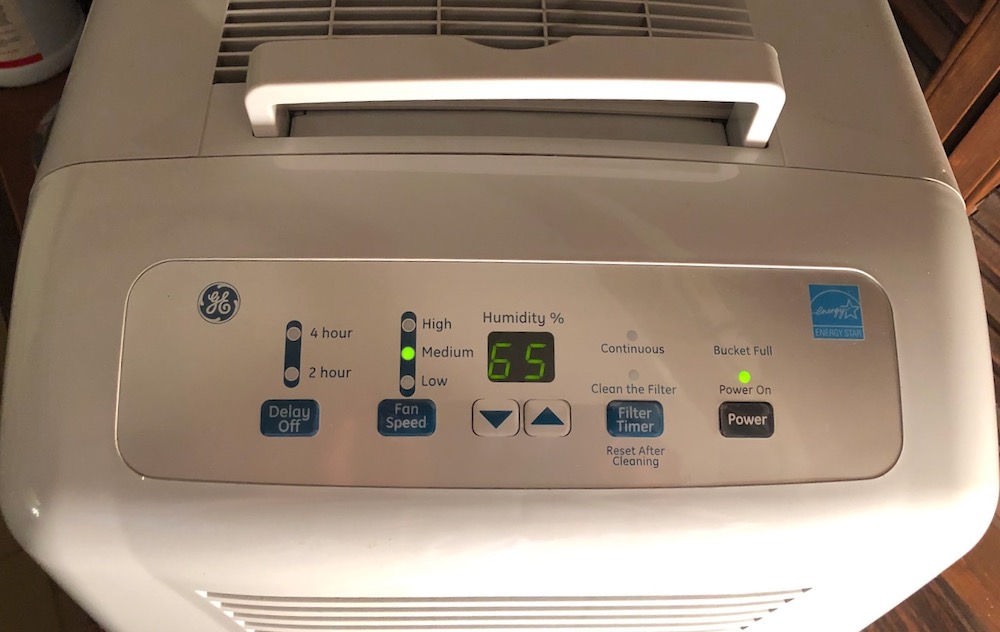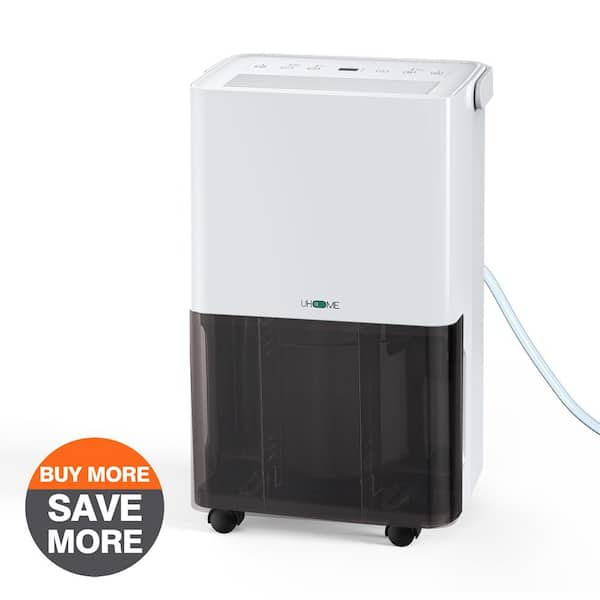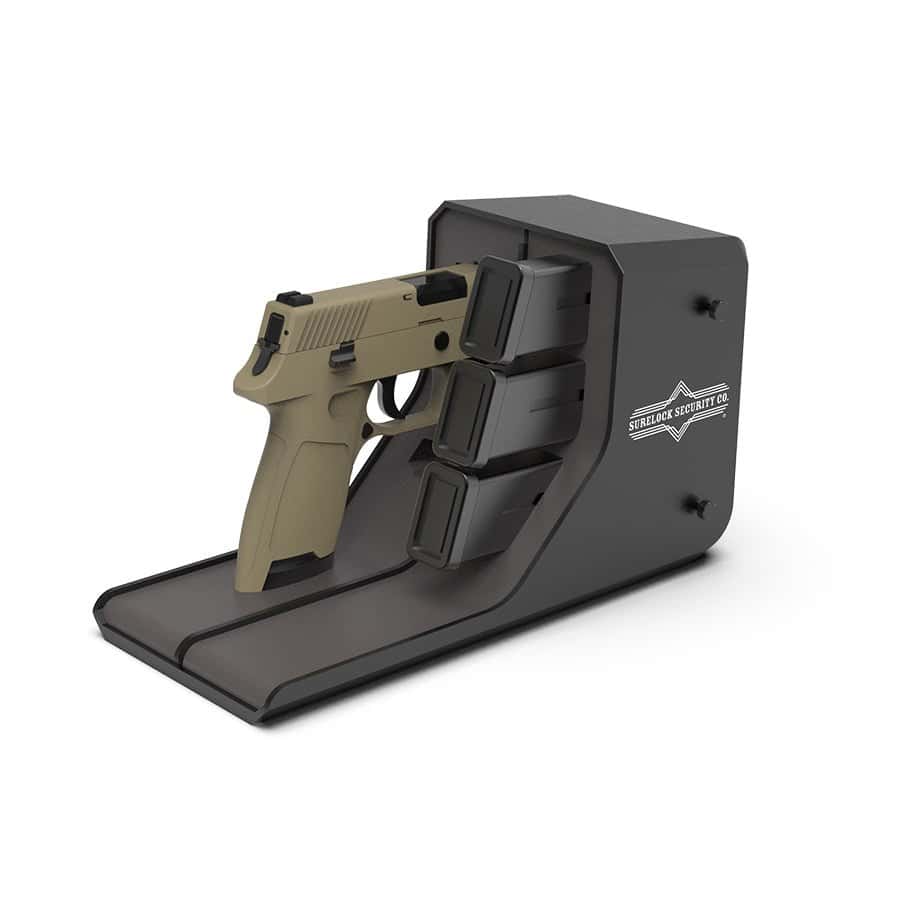Imagine a world where your home feels fresh and comfortable, no matter the season. Your dehumidifier is your trusty companion, quietly working to banish excess moisture from the air.
But have you ever wondered how long you can keep it running without a hitch? Understanding the limits can save you from unexpected breakdowns and ensure your space remains just as you like it. We’ll explore the ins and outs of running a dehumidifier continuously, helping you make informed decisions that boost efficiency and longevity.
Get ready to uncover the secrets of optimal dehumidifier use—your comfort depends on it!
Understanding Dehumidifier Functionality
Dehumidifiers help maintain indoor air quality by removing excess moisture. They prevent mold, reduce allergens, and improve comfort. Understanding how they work is essential for optimal use.
Dehumidifiers extract moisture from the air using a fan and cool coils. The fan draws air over the coils, where moisture condenses and collects. The dry air is then released back into the room.
Types Of Dehumidifiers
There are different types of dehumidifiers, including refrigerant and desiccant models. Refrigerant dehumidifiers use cooling coils to condense moisture. Desiccant dehumidifiers absorb moisture using a special material.
Several factors determine how long a dehumidifier can run continuously. The unit’s capacity and room size are significant factors. Larger rooms may require longer operation times.
Humidity levels also affect operation duration. High humidity demands more time to achieve desired levels. Energy efficiency plays a role in how long a unit can run effectively.
Importance Of Regular Maintenance
Regular maintenance ensures efficient dehumidifier operation. Clean filters and coils improve performance. Check water collection trays to prevent overflow. Routine checks prolong the unit’s lifespan.
Signs Your Dehumidifier Needs Rest
Watch for signs indicating your dehumidifier needs rest. Excessive noise or heat may signal overload. Reduced moisture collection suggests it needs a break. Pay attention to these signs for better functionality.
Factors Affecting Continuous Operation
Understanding the factors that affect how long you can continuously run a dehumidifier is crucial for optimizing its performance. It’s not just about pressing the ‘on’ button and walking away. Various elements play a role in determining the efficiency and effectiveness of your dehumidifier, and recognizing these can make all the difference in maintaining a comfortable environment. Dive into these factors to ensure you’re getting the most out of your device.
Room Size Considerations
Your room size matters when it comes to running a dehumidifier continuously. Imagine trying to dehumidify a large living room with a compact device meant for a small bedroom. It would be like asking a bicycle to carry the load of a truck. The bigger the room, the harder your dehumidifier will have to work.
Consider measuring the square footage of your space before choosing a dehumidifier. A larger room may require a more powerful unit or even multiple devices to effectively control humidity levels. This ensures your dehumidifier operates efficiently without overworking itself.
Humidity Levels Impact
Humidity levels are a game-changer in determining continuous operation. If your area experiences high humidity, your dehumidifier might need to run more frequently. Picture the sticky heat of summer; a dehumidifier will likely be your best friend.
Conversely, during dryer seasons, you might find your device doesn’t need to run as much. Keep an eye on your environment and adjust accordingly. You don’t want to waste energy and money running a dehumidifier in a dry space.
Dehumidifier Capacity And Type
The capacity and type of your dehumidifier significantly affect its operational limits. A small-capacity unit in a large, humid area might struggle to keep up. Think of it as putting a small motor in a race car; it simply won’t perform as expected.
Different types, like desiccant and refrigerant dehumidifiers, have varying capabilities. A desiccant model may work better in cooler climates, while a refrigerant type excels in warmer, humid conditions. Choose wisely based on your specific needs and climate.
It’s intriguing to consider how these factors intertwine. Have you ever noticed your dehumidifier working overtime during a rainy season? Or perhaps finding it hardly needed during a crisp, dry winter? Reflect on these observations to ensure you’re maximizing efficiency.
Energy Consumption And Efficiency
Dehumidifiers play a crucial role in maintaining optimal indoor air quality. Running them continuously may raise concerns about energy consumption and efficiency. Understanding how a dehumidifier uses energy helps in making informed decisions. It also helps in reducing costs while maintaining comfort. Let’s explore the energy aspects of running a dehumidifier.
Power Usage Analysis
Dehumidifiers consume varying amounts of electricity. The wattage usually ranges between 300 to 700 watts. This depends on the model and capacity. A higher capacity model may use more power. But it can also remove more moisture in a shorter time. It’s important to check the Energy Star rating. This rating indicates efficiency and energy savings. A more efficient model uses less electricity over time.
Cost-saving Tips
Running a dehumidifier efficiently can save money. Use a timer to operate it during off-peak hours. This can lower energy costs. Regularly clean the filters to ensure smooth operation. A clean filter helps the unit run more efficiently. Set the humidity level to a moderate range. Around 50% is ideal for comfort and efficiency. Position the dehumidifier in a central location. This allows for better air circulation and moisture removal.

Safety Concerns And Precautions
Dehumidifiers can be a lifesaver when it comes to maintaining a comfortable home environment. However, running them continuously raises safety concerns and necessitates precautions. It’s crucial to know the potential risks and how to mitigate them. After all, you want a safe and efficient operation without compromising your home’s safety. Let’s explore some key considerations.
Overheating Risks
Running a dehumidifier non-stop can lead to overheating. This is especially true in older models that lack advanced safety features. Just like any appliance, prolonged use without breaks can stress the machine.
Consider setting a timer to allow your dehumidifier to rest periodically. This simple step can extend its lifespan and prevent overheating. Think of it like taking breaks during a long drive—it keeps everything running smoothly.
Proper Ventilation Importance
Your dehumidifier needs adequate ventilation to operate safely. Without proper airflow, it might struggle, leading to overheating or inefficiency. Ensure the area around the dehumidifier is clear of obstructions.
Have you ever noticed your device getting unusually warm? This might be due to poor ventilation. Position it away from walls or furniture that might block airflow. This helps the dehumidifier breathe and function optimally.
These safety precautions are easy to implement and can save you from potential hazards. Are there other safety tips you’ve found helpful? Share your experiences to help others enjoy a safer home environment.
Maintenance And Longevity
Maintaining a dehumidifier can extend its lifespan. Regular care ensures it operates efficiently. Understanding the basics of maintenance can save money and energy. A well-maintained dehumidifier functions better and lasts longer. Let’s explore some essential maintenance tips.
Regular Cleaning Guidelines
Regular cleaning is crucial for your dehumidifier. Dust and dirt can clog the system. Clean the water tank every week. Use a mild detergent and warm water. Wipe down the exterior with a damp cloth. Avoid using harsh chemicals. They can damage the unit. Keep the air intake and exhaust free from dust. This ensures smooth airflow and efficient operation.
Filter Replacement Frequency
Filters play a vital role in your dehumidifier’s performance. They trap dust and allergens. Over time, they become clogged. Check your filter every two weeks. Replace it every three months for optimal performance. Some models have washable filters. Wash them with warm water and let them dry completely. Always follow the manufacturer’s instructions. This ensures you replace or clean the filters correctly.
Optimal Running Time Recommendations
When considering the optimal running time for your dehumidifier, it’s crucial to strike a balance between effectiveness and energy efficiency. Running a dehumidifier continuously may seem like the best way to maintain perfect air quality, but it can also lead to unnecessary energy consumption and wear on the device. Understanding the best duration for different environments and conditions can help you make informed decisions that benefit both your home and your wallet.
Ideal Duration For Different Settings
Every room in your house might require a different dehumidifier running time. A damp basement may need more attention than a bedroom. In high-humidity areas like basements, running the dehumidifier for 10-12 hours daily can effectively keep moisture at bay. In contrast, a bedroom might only need the dehumidifier for about 4-6 hours to maintain comfort.
Consider the size of the room and the level of humidity. A larger room with high humidity might demand longer operation times. A compact space with moderate humidity can be managed with shorter periods. You should check humidity levels regularly to adjust accordingly.
Seasonal Adjustments
As seasons change, your dehumidifier’s running time might need adjustments. During summer, when humidity peaks, extended operation times can be beneficial. You might find yourself running the unit for 12-16 hours, especially during rainy spells when moisture levels rise significantly.
Winter, on the other hand, often brings drier air, reducing the need for a dehumidifier. You might only run it intermittently or not at all. Keep an eye on your indoor humidity levels; they should guide your decision-making. What changes have you noticed in your home during different seasons?
Understanding your unique home environment can lead to more effective use of your dehumidifier. Make it a habit to observe and adjust. Your comfort and energy bill will thank you.
Troubleshooting Common Issues
Running a dehumidifier continuously can lead to some common issues. Addressing these issues promptly ensures efficient operation and longevity. In this section, we will discuss solutions for noise problems and water leakage.
Noise Problems
Dehumidifiers can become noisy due to loose parts or debris. Check for any loose screws or panels. Tighten them to reduce vibrations. Clean the air filter regularly. Dust can clog filters, increasing noise. Ensure the unit is on a stable surface. Uneven surfaces can cause rattling sounds. If noise persists, consult the user manual or contact support.
Water Leakage Solutions
Water leakage is a common concern with dehumidifiers. Inspect the water tank for cracks. Replace it if damaged. Ensure the tank is correctly positioned. Misalignment can lead to leaks. Check the hose connection for tightness. Loose hoses can cause water to escape. Clean the drain hose to prevent blockages. Blockages can lead to overflow. Regular maintenance can prevent most leakage issues.

Frequently Asked Questions
Is It Bad To Leave The Dehumidifier On All The Time?
Leaving a dehumidifier on constantly can increase energy costs. Use a timer or humidity sensor to manage usage efficiently. Ensure regular maintenance to prevent overheating and prolong its lifespan. Always follow manufacturer guidelines for optimal performance.
Is It Okay To Run A Dehumidifier 24 Hours A Day?
Yes, running a dehumidifier 24 hours a day is generally safe. It effectively controls humidity and prevents mold growth. Ensure proper maintenance for optimal performance. Regularly clean filters and check drainage to avoid issues. Adjust settings based on your room’s humidity levels for efficient operation.
How Long Should A Dehumidifier Run Daily?
A dehumidifier can run continuously for 24 hours daily if needed. However, it’s typically efficient to run it for 12-16 hours. This depends on humidity levels and the specific model. Always ensure the dehumidifier’s reservoir is emptied regularly to prevent overflow and maintain efficiency.
Is It Safe To Run A Dehumidifier Nonstop?
Yes, it’s generally safe to run a dehumidifier nonstop. Modern units are designed to operate continuously. However, ensure proper maintenance like cleaning filters and emptying the reservoir. This prevents overheating and ensures optimal performance. Always check the manufacturer’s guidelines for specific recommendations.
Conclusion
Running a dehumidifier continuously is generally safe. Most models are designed for it. Just ensure regular maintenance. Clean filters and check water levels often. This prevents issues and keeps the air fresh. Energy efficiency matters too. Consider energy-saving models for long-term use.
Always follow the manufacturer’s instructions. They provide specific guidance for your model. A well-maintained dehumidifier improves home comfort. It reduces moisture and prevents mold growth. So, run it wisely and enjoy a healthier living space. Your home will thank you.



